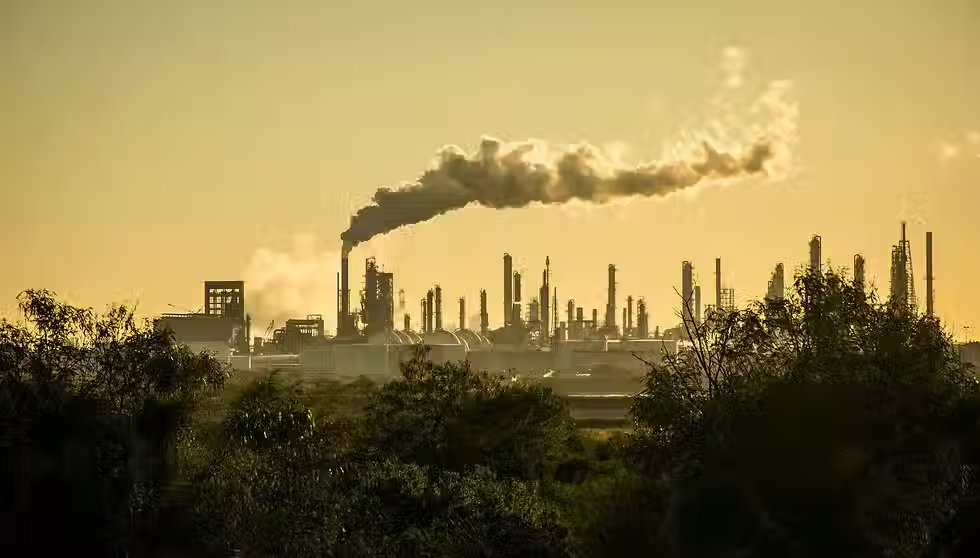A High Schooler's Guide to Predicting Air Quality in Texas using Machine Learning
- BetterMind Labs

- Jul 28
- 4 min read
Updated: Aug 20

For years, we've focused on reporting air quality. But now, machine-learning air quality prediction in Texas is emerging as a real, transformative possibility. We’ve all seen it: the hazy sky, the daily Air Quality Index (AQI) report on the news, the warnings for "sensitive groups." For many in Texas, from the industrial corridors of Houston to the bustling traffic of Dallas, air quality is a daily concern that impacts health, outdoor activities, and overall well-being.
For decades, we’ve focused on reporting air quality. But what if we could reliably predict it? What if we could give communities, schools, and individuals with health conditions a heads-up before a bad air day even begins?
This is no longer science fiction. It's a problem perfectly suited for machine learning.
Why Predicting Air Quality is a Perfect Problem for Machine Learning
Air quality is incredibly complex. It’s a dynamic mix of countless variables:
Weather patterns (wind speed, direction, humidity, temperature)
Pollutants (ozone, PM2.5, nitrogen dioxide)
Human activity (traffic density, industrial output)
The relationships between these factors are subtle and constantly changing. While a human might struggle to see the hidden patterns, a machine learning model is designed for exactly this task. It can analyze vast amounts of historical data and "learn" how these variables interact to produce a specific Air Quality Index.
The Machine Learning Project Workflow: From Data to Prediction
Creating a predictive model for air quality follows a clear, structured path. It's a process that demystifies AI and turns it into a practical tool for scientific inquiry.

Step 1: Gathering the Data
The first step is to collect historical data. Public sources like the US Environmental Protection Agency (EPA) and the Texas Commission on Environmental Quality (TCEQ) provide years of detailed, hourly measurements of pollutants and weather conditions across the state.
Step 2: Training the Model
Next, this data is fed into a machine learning model. The model analyzes the data, identifying complex correlations—like how a certain wind direction combined with high traffic and specific temperatures led to high ozone levels in the past. This is the "learning" phase.
Step 3: Making a Prediction
Once trained, the model can be given the current day's data (today's temperature, wind forecast, etc.) to generate a prediction of the air quality 24 or 48 hours in the future
Case Study in Action: A BetterMind Labs Alumni uses machine learning for air quality prediction in Texas
This workflow isn't just for university researchers. It's something passionate high school students can achieve with the right guidance.

Meet "Zoya," a high school student from a community near the Houston Ship Channel. Passionate about environmental science, she was tired of seeing her friends with asthma struggle on days when the air quality unexpectedly plummeted. She didn't just want to report the problem; she wanted to anticipate it.
Zoya brought this passion to the BetterMind Labs AI/ML program. While she understood the environmental science, she needed the technical skills to build a predictive tool. The program provided the critical bridge.
Mentorship: Her mentors helped her navigate the vast public databases of the TCEQ, teaching her how to access and clean the complex environmental data.
Technical Skills: She learned how to implement powerful time-series forecasting models in Python—the same kinds of models used by data scientists in the industry.
Project Development: Over the course of the program, Zoya built a functional machine learning model. It could take real-time weather and pollutant data from her part of Texas and generate a reliable 24-hour AQI forecast.
Zoya's project was more than an assignment. It was a potential tool for her community and a powerful story of purpose for her college applications. It showed that she could combine her passion for environmental justice with high-level technical skills to create something with real-world impact.
The Impact: Beyond a Student AI Project
A successful air quality prediction model has far-reaching implications. It could:
Allow school districts to make informed decisions about outdoor recess.
Help individuals with respiratory conditions plan their activities and medication.
Provide city planners with a tool to understand the immediate impact of traffic or industrial events.
This case study shows that machine learning is a powerful tool for the next generation of problem-solvers. It allows students to move from being passive observers of the world's challenges to becoming active architects of its solutions.
Ready to help your teen build a project that tackles a real-world problem?
Explore the BetterMind Labs AI Internship and see how he or she can turn their passion into a project with purpose.
Relevant Links
Government Air Quality Data Sources:
U.S. Environmental Protection Agency (EPA): https://www.epa.gov/outdoor-air-quality-data
Texas Commission on Environmental Quality (TCEQ): https://www.tceq.texas.gov/airquality/monops
Machine Learning for Air Quality Prediction:
MDPI - Machine Learning-Based Prediction of Air Quality: https://www.mdpi.com/2076-3417/10/24/9151
Scholars@Duke - Unmasking the sky: high-resolution PM2.5 prediction in Texas using machine learning techniques: https://scholars.duke.edu/publication/1623662
Time-Series Forecasting Models:
MDPI - Time Series Forecasting of Air Quality: A Case Study of Sofia City: https://www.mdpi.com/2073-4433/13/5/788
MDPI - Time Series Forecasting for Air Quality with Structured and Unstructured Data Using Artificial Neural Networks: https://www.mdpi.com/2073-4433/16/3/320
Student Projects and Inspiration:
BetterMind Labs - Can Machine Learning Predict Air Quality in Texas? A High School Student’s Case Study: https://www.bettermindlabs.org/post/can-machine-learning-predict-air-quality-in-texas-a-high-school-student-s-case-study













Comments